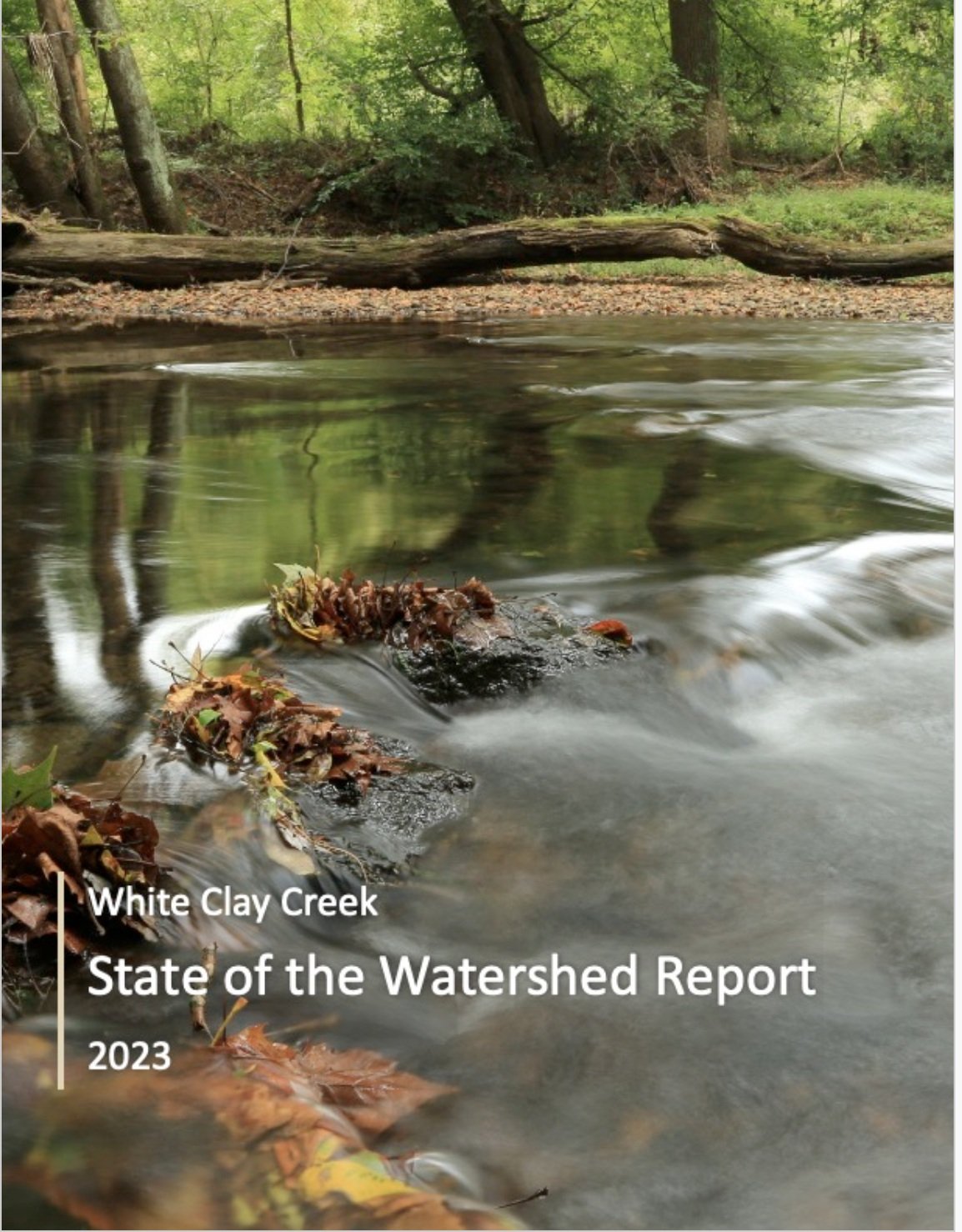WELCOME TO THE 2023 STATE OF THE WATERSHED OVERVIEW
Numerous accomplishments and progress have been made since the White Clay Creek Watershed Management Plan (2000) and the subsequent White Clay Creek State of the Watershed reports (2008, 2016) were published. These efforts have led to notable achievements and advancements in watershed health. Looking ahead, those doing work in the watershed can leverage the insights and progress outlined in the 2023 State of the Watershed Report to strategically guide actions and investments aimed at further enhancing the overall health and sustainability of the White Clay Creek watershed.
Overall Assessment
Overall, the White Clay Creek Watershed received a grade of B- based on data compiled in 2023. The watershed was divided into its five main subwatersheds, the East, Middle and West Branches and the Upper and Lower White Clay Creek and the grades of all the sections are reflected in the final grade for the watershed as a whole.
The Color Wheel
serves as a comprehensive tool for assessing the health of the White Clay Creek watershed, evaluating it across five main categories and 20 indicators within each category. In the full report, you'll find color wheels representing each of the five subwatersheds, along with explanations detailing how the grades were calculated. Additionally, the report offers in-depth descriptions of the five key watershed health categories: Water Quality, Habitat, Hydrology, Recreation, and Scenery, including their respective indicators.
Methodology Report
This Report was prepared by White Clay Wild and Scenic River Program, University of Delaware Water Resources Center, and Stroud Water Research Center with the goal of translating scientific information about the watershed into easy to understand river grades thereby providing a snapshot of current conditions and creating an objective means to look at future conditions.
We would also like to acknowledge the Brandywine Conservancy for editing and design support, as well as the William Penn Foundation for its support of the White Clay Creek State of the Watershed report and their commitment to restore and protect the White Clay Creek watershed and the entire Delaware River Basin.


